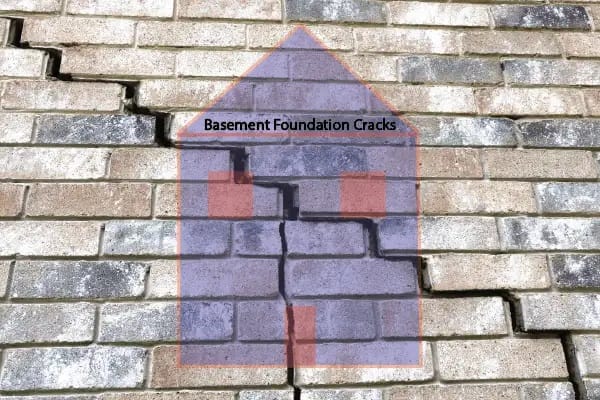9 Simple Techniques For Best Basement Waterproofing
9 Simple Techniques For Best Basement Waterproofing
Blog Article
Best Basement Waterproofing for Beginners
Table of ContentsGet This Report about Best Basement WaterproofingBest Basement Waterproofing Can Be Fun For EveryoneBest Basement Waterproofing Can Be Fun For AnyoneThe Definitive Guide for Best Basement WaterproofingGet This Report about Best Basement Waterproofing
AdvantaClean's qualified professionals and specialists will locate the water source. If wall or slab splits are existing, we will inject polyurethane and epoxies right into the splits and secure the concession, avoiding additional wetness from getting in.Correct rating around the home to route dampness away from the structure. Installing, fixing, or cleaning seamless gutters and downspouts. Inside or outside waterproofing with filler, sealant, and/or water resistant paint. Setting up basement ventilation systems, conditioning systems, or basement dehumidifier systems to get water out of your cellar. Choosing AdvantaClean's basement waterproofing services is an efficient way to deal with moisture and avoid mold and mildew from compromising the framework of your home and the wellness of your household.
If there's condensation outside of the aluminum foil, you have high moisture in your basement. Fix it with a portable space dehumidifier or a whole-house humidifier system rather than waterproofing items. If the aluminum foil has condensation on the inside surface area (next to the wall surface), the dirt around your home may be normally damp from a high water table or poor soil drainage.
You can waterproof just your indoor walls, which may address the trouble. Once they dry, they adhere permanently to concrete and masonry wall surfaces.
The Ultimate Guide To Best Basement Waterproofing
Concrete water resistant finishings can't be used to formerly repainted surface areas; inspect the label. Known as densifiers, they are appropriate only for walls that haven't been repainted or secured.
You brush, roll, or spray it on a lot even more heavily one gallon covers just 75 square feet, not the 300 square feet regular with common paint. Water resistant paint is great for do it yourself application. You can use it over repainted surfaces, and paint over it once it's healed (one gallon costs $37).
It can set you back $10,000 to $15,000, relying on the work required. Exterior waterproofing involves digging deep into throughout your home to the full deepness of the foundation wall surfaces, after that installing a water resistant finish or membrane topped by water drainage panels. The panels give a simple path for water to flow down to an outside French drain at the bottom of your foundation.
What Does Best Basement Waterproofing Mean?
A cellar without waterproofing is kind of like that. Your basement does not want to go with a downpour without correct security just as much as you do not want to.
Exterior waterproofing is a waterproofing approach that involves sealing your home from the exterior. It's kind of like a moat around a castle. It entails excavating a trench around your whole house down to the structure (regarding 8 to 10 feet down). The foundation walls are then cleansed, sealed, and covered with a waterproof membrane layer or sealant.

Get This Report about Best Basement Waterproofing
It's an extra engaged process that needs excavating up your backyard, which is expensive and lengthy. Exterior waterproofing entails getting rid of every little thing surrounding the house, including porches, driveways, pathways, landscaping, AC units, decks, and so view on. If any one of the work was done improperly and water is still entering your basement, there isn't much you can do to correct or fix it.
Inside basement waterproofing includes waterproofing from the inside. Any water that leaks into your basement is great post to read rerouted before it touches your floor. It's sort of like using a raincoat under your clothes. It entails two things: a water drainage track and a sump pump. It works by securing the inside of your cellar walls and floors so water that attempts to enter is directed out through a sump pump.
It's an effective approach to water-proof your cellar. The downside of interior basement waterproofing primarily has to do with the setup process.
The Main Principles Of Best Basement Waterproofing
In conclusion, outside and indoor cellar waterproofing are both effective methods of shielding your home from water damages. Outside waterproofing produces an obstacle that avoids water from entering your home, while indoor waterproofing reroutes water that does enter your home. And it is very important to keep in mind that exterior waterproofing is a costly and turbulent setup process when compared to indoor waterproofing.
Whichever method you select, make certain you select a dependable and trustworthy specialist for the work. Both approaches need experienced employees to manage the job. her comment is here If you have any type of inquiries about cellar waterproofing, please reach out to us. And if you're in our solution location and have water in your basement, contact us for a complimentary, no-obligation home examination.
You can fill in our type below. Best Basement Waterproofing, begin a chat in the bottom right-hand edge, or call us at 1-800-827-0702
Report this page